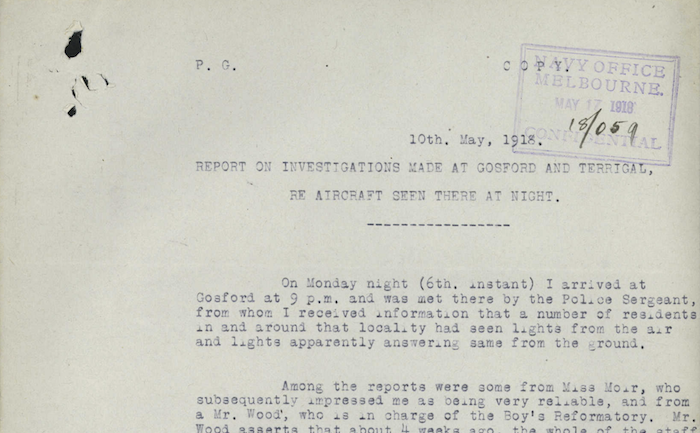Monday, 18 November 1918
NAA: MP1049/1, 1918/066, page 416 is a report from Lieutenant Commander George D. Warren RANR, commanding officer, HMAS Coogee, a civilian coastal steamship requistioned by the Navy for use as a minesweeper. Warren is reporting on the results of his investigation of an aeroplane seen from a naval lookout on the northern end of King […]










